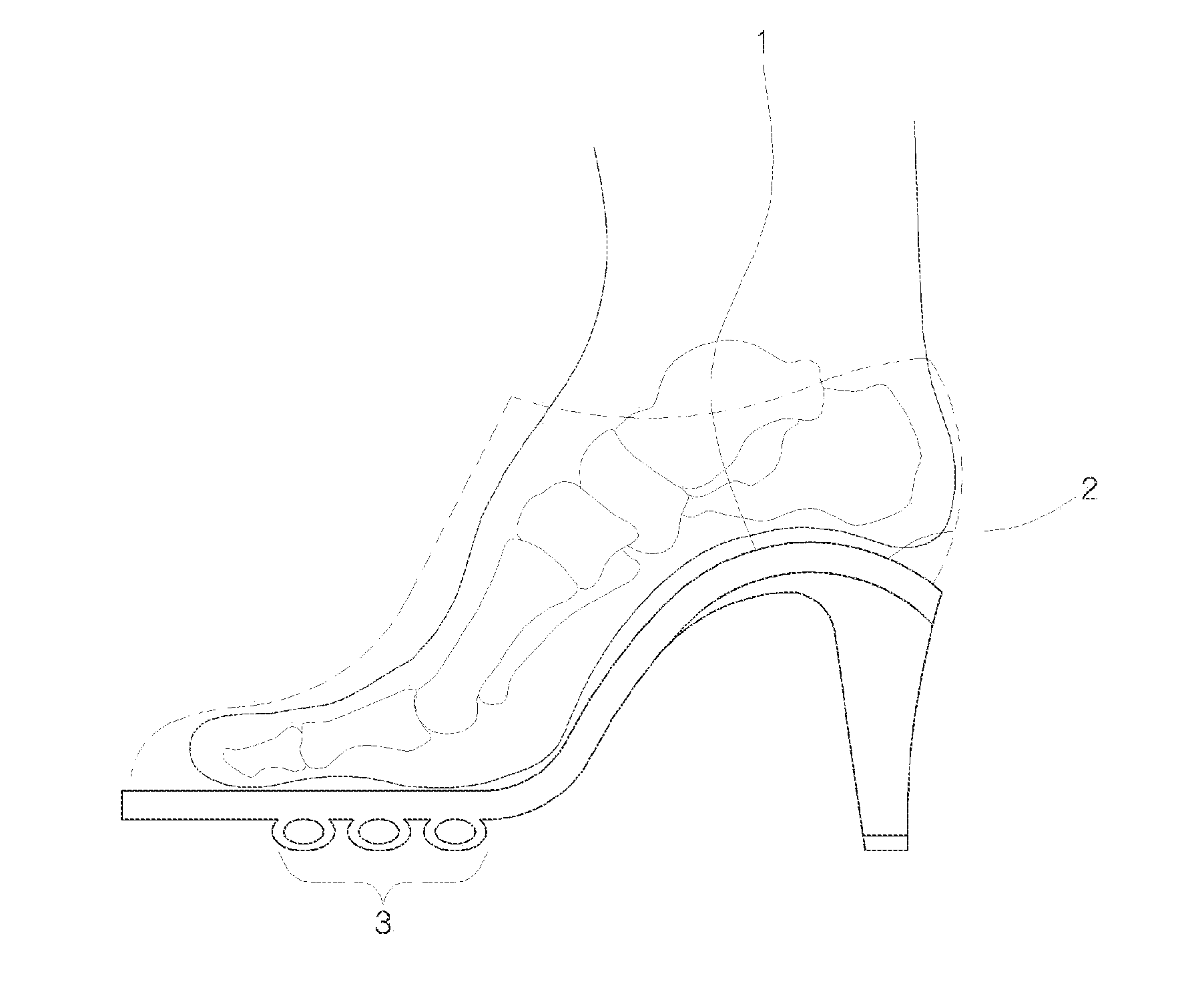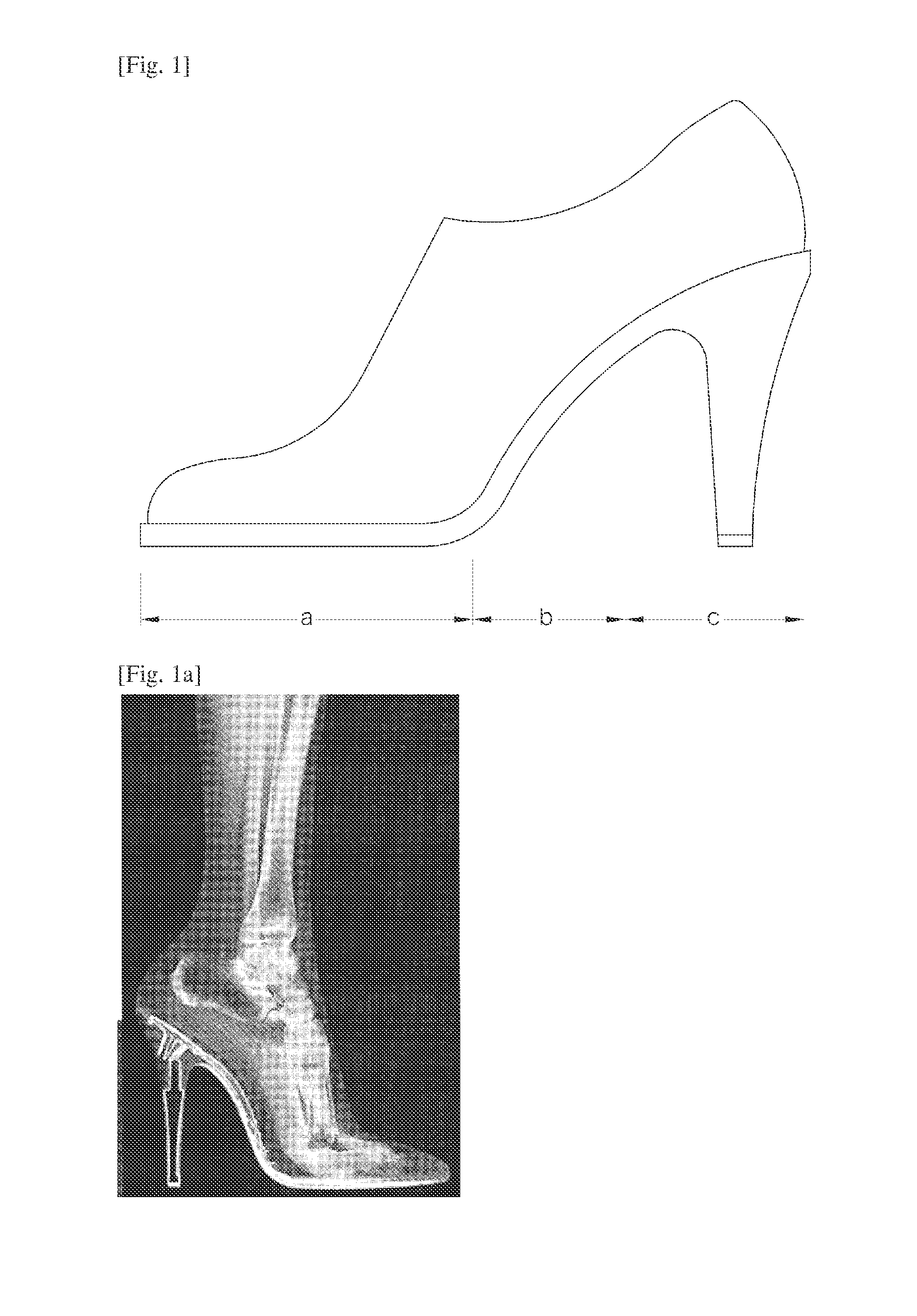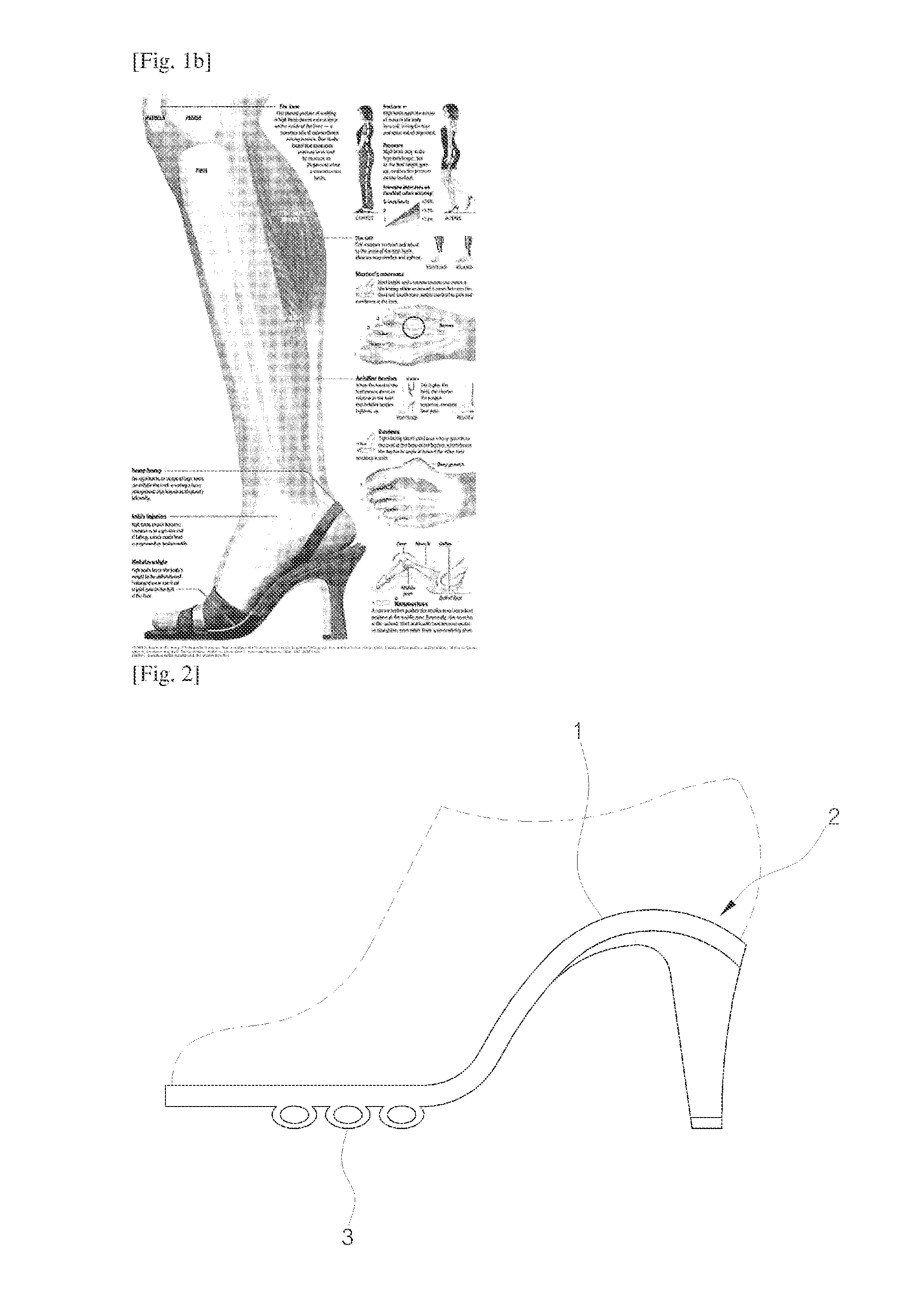Therefore, taking these points into consideration, heels of recent high heels are becoming higher to a height beyond imagination such that even models who are professional walkers fall down at fashion shows, however many women are not aware of the dangers from high heels.
Currently, according to public knowledge, many factors that harm the health of feet, the health of joints and the health of spine exist hidden behind the popularity of the high heels.
First, when walking for a long period of time while wearing the high heel having a high heel part, the
ankle becomes unstable and excessive pressures occur at
forefoot, and knee joints (knees) may be stressed because ankles are unstable.
In other words, because the heel is high, the
ankle moves left and right while walking, muscles and joints continuously perform their role to maintain balance thus receiving large amounts of stress, and the joints become damaged when the walking is extended for a long period of time.
Therefore, because the pressure concentrates to a specific part,
blisters, calluses or corns may form at the
forefoot part, and as a result, the concentration to the front part of the foot eventually causes pain from the big
toe bending toward the
second toe and a bone protruding outward due to hallux valgus of the toe.
In other words, the excessive pressure to the front part of the foot and the reduced area of the front part of the high heel eventually reduces the stress transferred to an inner arch of the sole, so, because the front part is narrow, the toes become bent when wearing the shoe.
In addition, if the stress is not continuously transferred to the inner arch, the toe is continuously bent.
Third, when the center of gravity moves to the front of the body due to the height of the high heel, the spine becomes deformed and the deformation is called
lordosis, and when the deformation is extended for a long period of time, various spinal disorders such as
low back pain,
lumbar herniated
intervertebral disc, etc. may occur, and as a result, pain in the shoulder and the neck may occur.
Fourth, recent research states that due to the height of the high heel, the pressure applied to the knee increases about 25% more than when the high heel is not worn, so the high heel does not only endanger the foot, but also our knee.
In addition, because of the height of the high heel, the
gait becomes unstable, and the possibility of pain due to an
ankle sprain is high while walking on an uneven surface.
Further, due to the height of the high heel, a contraction of the
muscle may occur, so pain in the heel of the foot may occur and other joints may become degraded.
In other words, the body should be balanced by the
entire foot to walk correctly, however, because the weight concentrates to the front since the heel is lifted while walking with the high heel, the body leans forward, so the
pelvis and the neck naturally moves out to the front thus a normal spinal position cannot be established.
In addition, the muscles are contracted for a long period of time when the high heel is worn, and as a result, when a
calf muscle, which is the most important factor for walking, is contracted, a
normal blood circulation becomes difficult so symptoms of
varicose veins may occur.
Further, because the
waist leans backward, the lower
abdomen sticks out and the abdominal
muscle becomes stretched and the strength in the abdominal part reduces.
In addition, the
waist is in constant pain since
muscle cramps (length is shortened) in the
waist occur, the risk of disk exist, the strength of the abdominal part becomes weaker so the abdominal part sticks out and a sense of having a potbelly may be felt even when standing still.
Further, the high heel weakens the Achilles' tendon.
In this case, when a sudden motional force is applied to an unnatural direction, the possibility of the tendon being torn is high.
Recently, when women who enjoy wearing the high heels wear sneakers or a shoe having a low heel, pain occurs in the heel, and this is due to the Achilles' tendinitis occurring from the Achilles' tendon contracting by wearing the high heel for a long period of time.
The reason is that, because of the high heel, the Achilles' tendon becomes thick and hard such that the Achilles' tendon becomes inelastic, and when an exercise is started, the Achilles' tendon becomes strained and inflamed.
Therefore, when the heel of the shoe is high, the heel of the wearer is always lifted and causes abnormal deformation.
Specifically, the length of the back part the Achilles' tendon, in which the elasticity is degraded in accordance with the height of the high heel, becomes suddenly stretched when the high heel is removed, thus a pull is felt in the heel of the wearer such that pain occurs.
Thus, wearing a shoe without heels or standing
barefoot becomes uncomfortable.
Therefore, when the high heel is continuously worn, the elasticity degrades due to the abnormal deformation of the Achilles' tendon, which is a muscle strongly functioning when the heel of the wearer is lifted, so when the wearer moves while wearing the low shoe, the hardened Achilles' tendon suddenly stretches and receives a large amount of stress.
In addition, when the high heel is worn for a long period of time, the flexibility of the muscular
fiber of the
calf muscle degrades and does not correctly absorb the shock from making contact with the ground.
 Login to View More
Login to View More  Login to View More
Login to View More 


